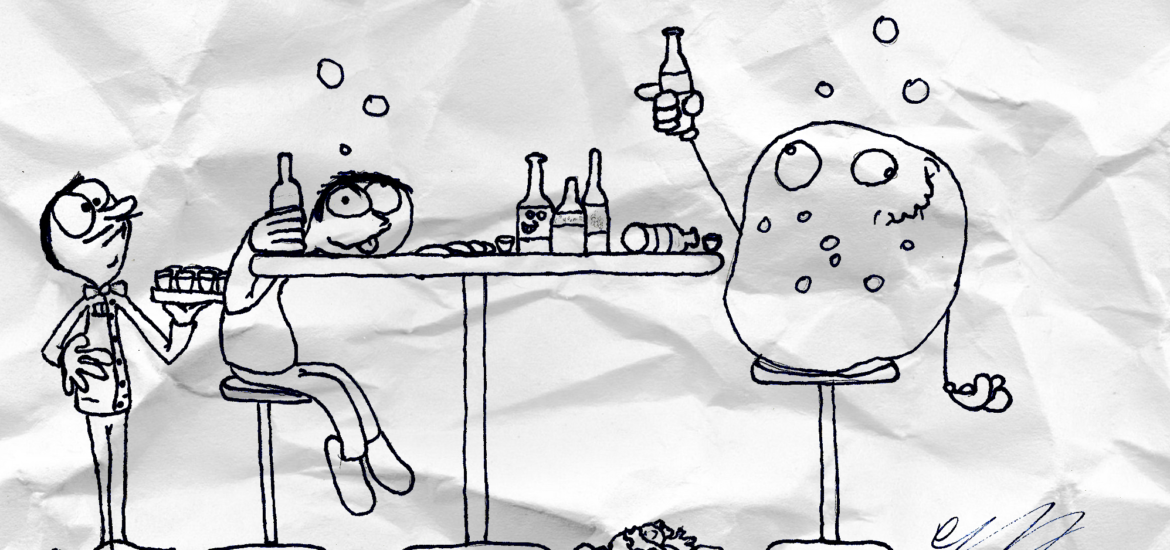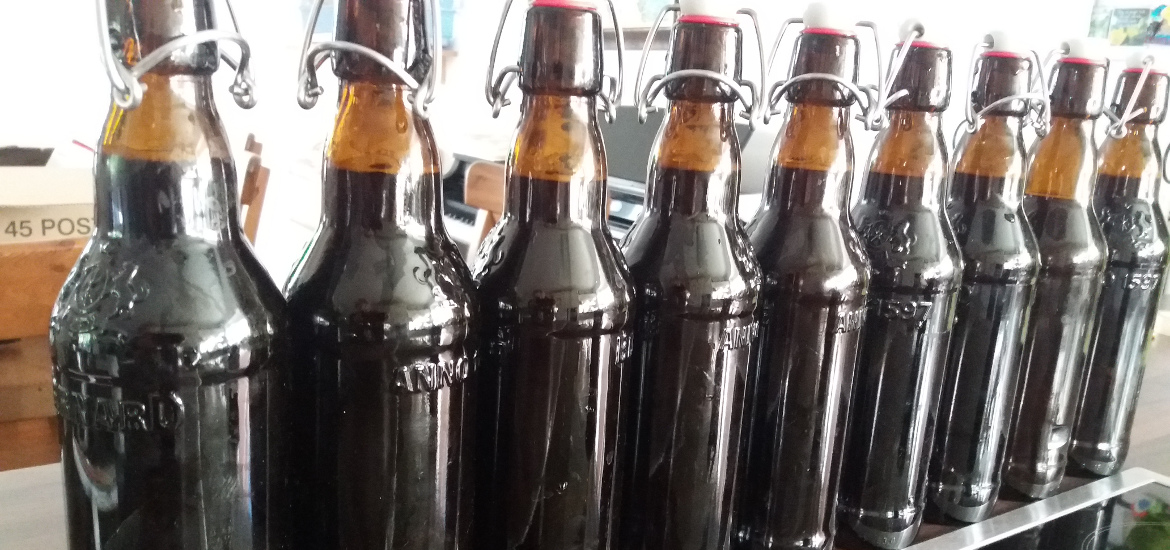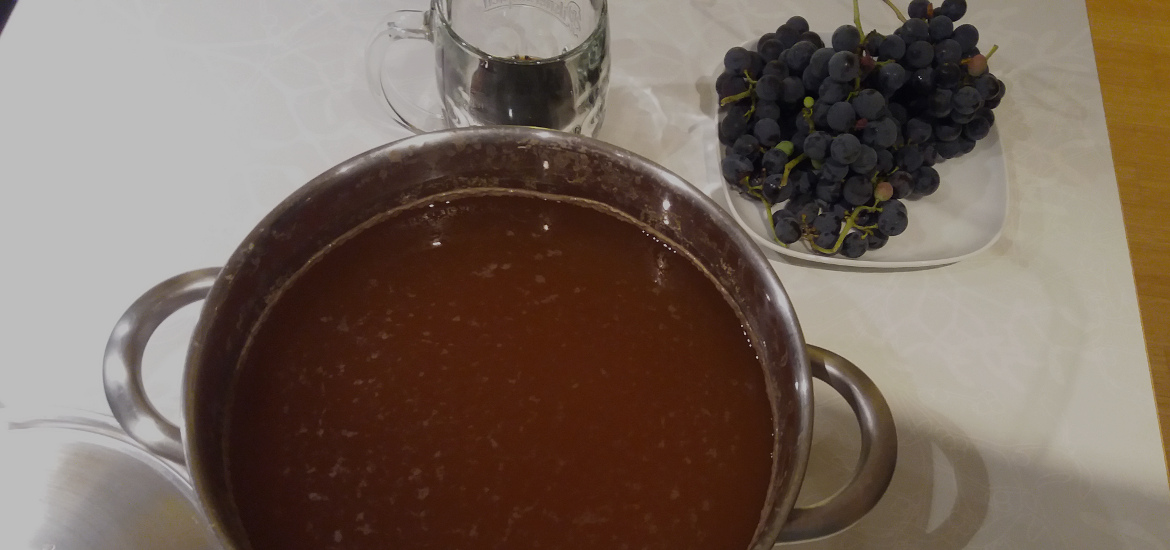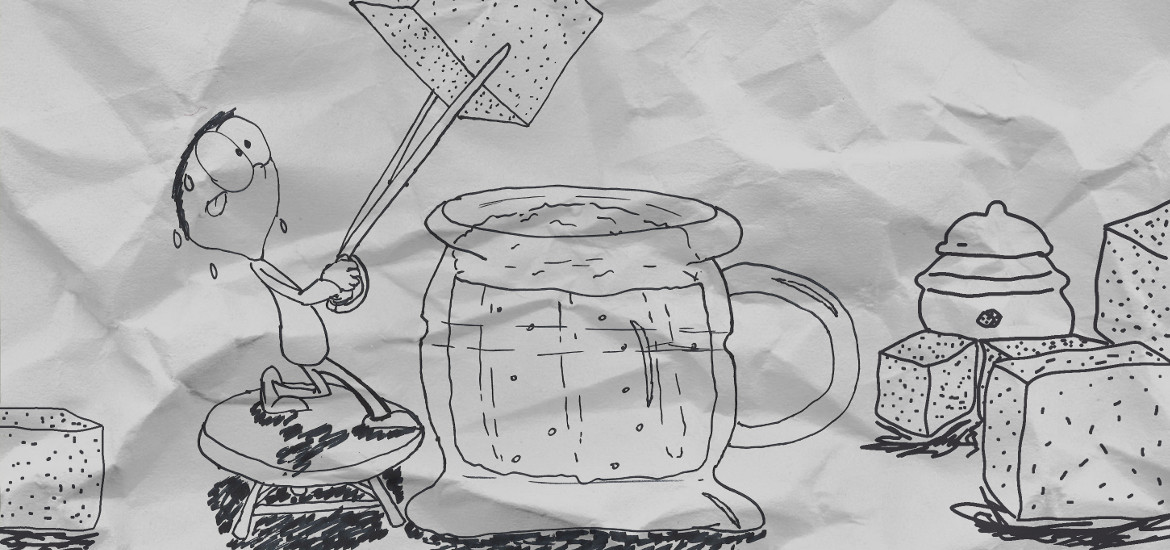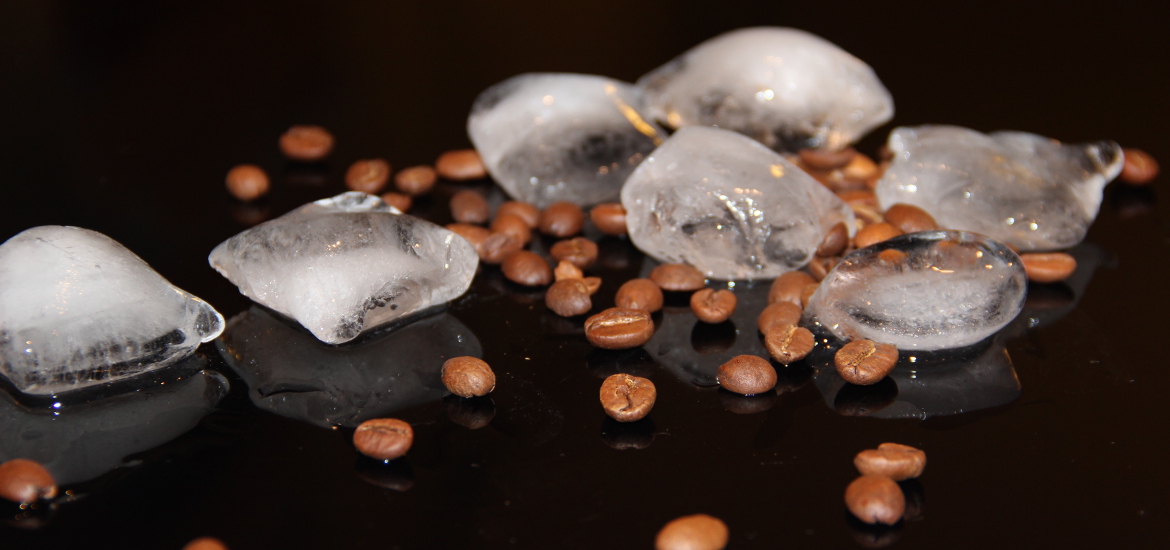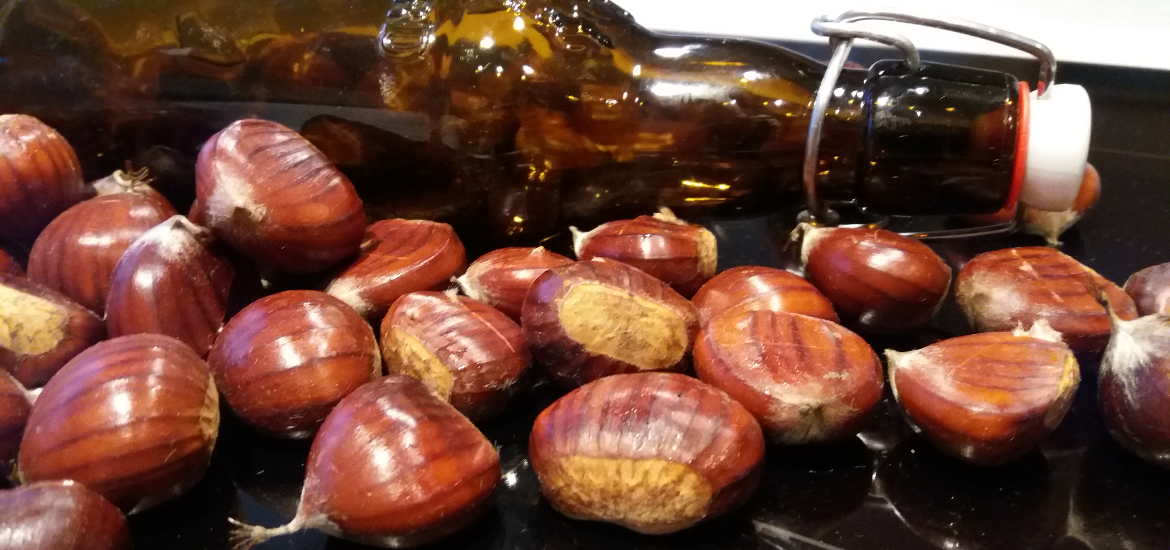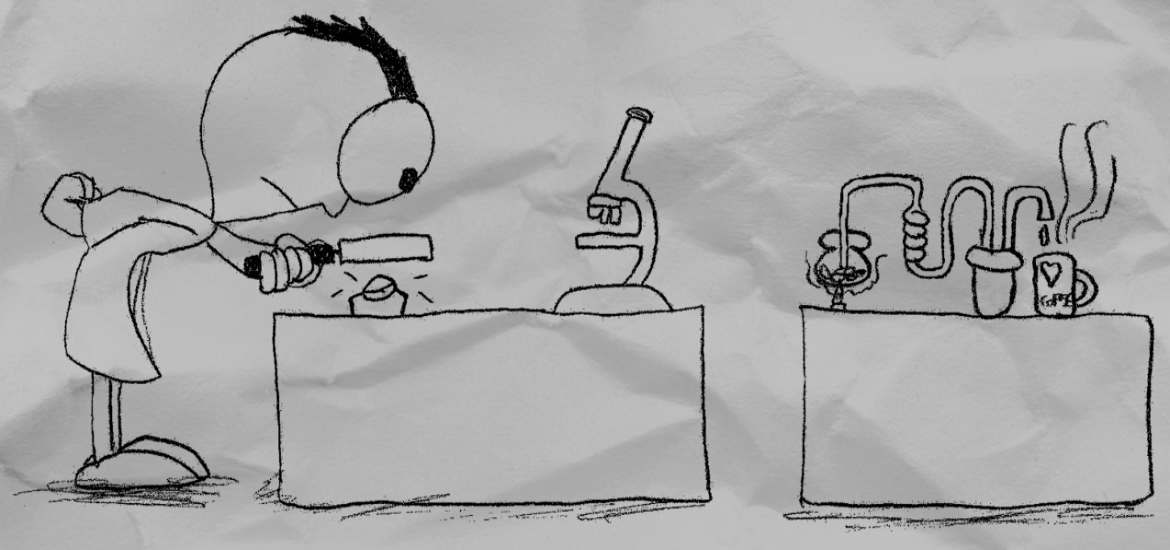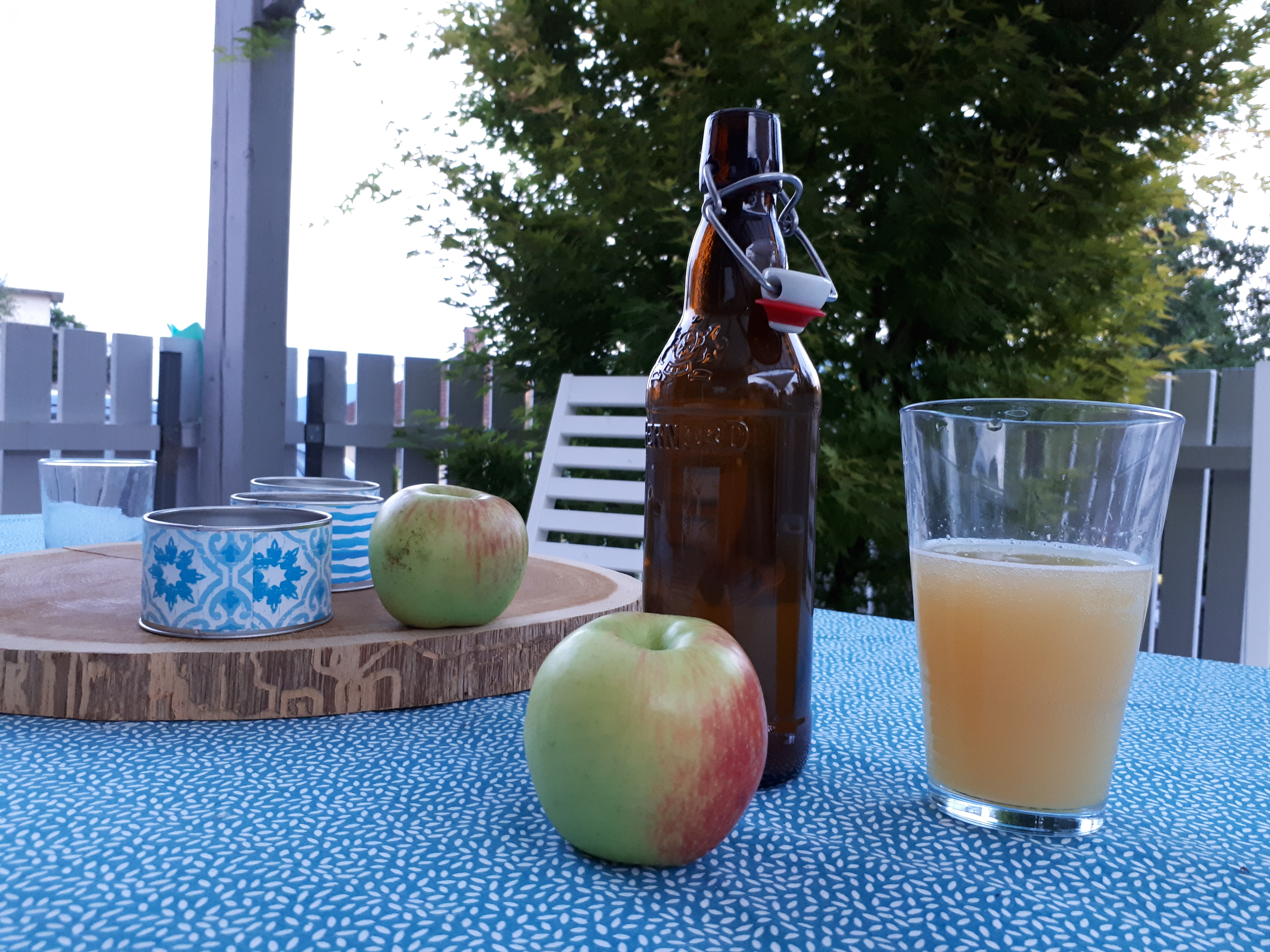The most important thing in beer brewing is yeast. Without this little helpers nothing would happen. There would simply be no change from the sweet bitter tasting alcohol free mixture of carbohydrates and hops to the refreshing bubbly beer. You can change the amount or type of grain, add or remove hops, try some special spices. Everything is variable except the beer yeast.
No beer yeast = no fermentation
True, you can change the type (strains) of yeast, but you simply need yeast in order for the fermentation to occur. Otherwise, bacteria will take charge, make the fermentation of their own – and reduce the taste to old socks, sourness and acidity. Might be interesting if you like lambic style beers. But definitely not what would you expect from beer in the today’s common meaning of the word.
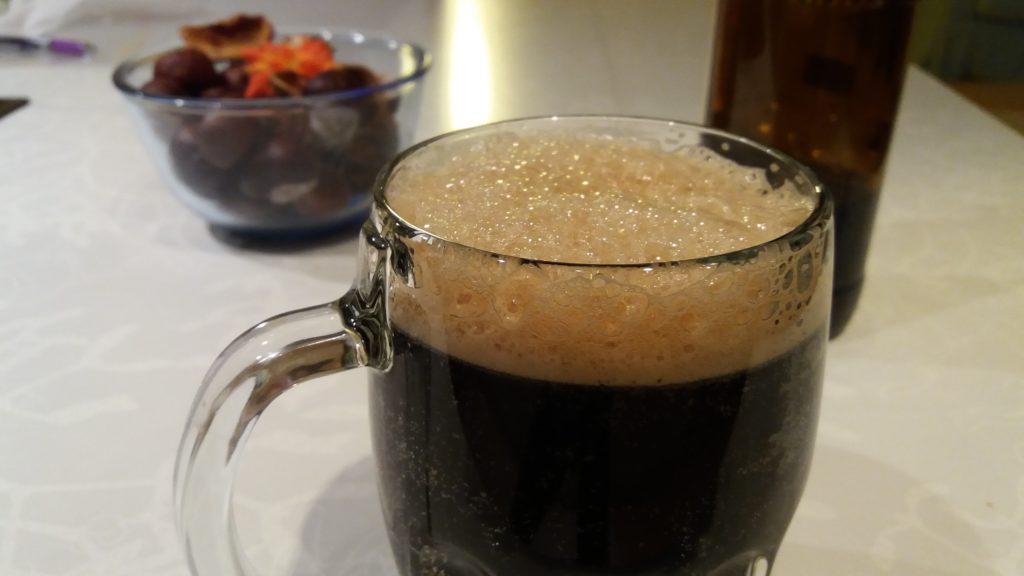
Beer and Yeast – Some background
So, what is yeast? According to Wikipedia yeasts are single-celled microorganisms classified as members of the fungus kingdom. There are more than 1500 different species of yeast currently known. That is a lot of variability, but for beer brewing we are interested in only one species – Saccharomyces cerevisiae.
It’s like saying I am interested in only one city on the entire planet Earth – for example Melbourne. Everything else just doesn’t cut it. But still, there are a lot of different people in Melbourne and similarly in only one yeast species we can have a lot of variability.
Therefore, it is natural to ask oneself if all this variability exists, is there a difference in the beer they make? And if there is a difference, what is it? The taste? Color? Amount of alcohol? Speed of fermentation? I will highlight some yeast properties and by saying yeast and using this word in the rest of the text I am naturally speaking only of Saccharomyces cerevisiae – the only beer yeast there is.
Yeast role in brewing
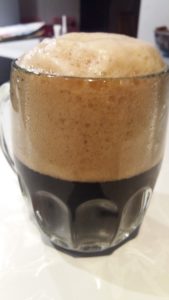
The main function of yeast in beer brewing is to break down sugars and to add alcohol to beer as a byproduct of this process. Since we know alcohol is not favored as living medium, we can assume that there are different kinds of yeasts, with different tolerance for alcohol. And our assumption is true. If you want to make strong Belgian type of beer, you need special strains of yeast.
Simple yeast can bring your alcohol level to around 4% ABV while special yeast for Belgian type of beer can bring your alcohol level to around 10%! There is a nice article illustrating that. It shows the great variability of the yeast. While some types can tolerate less than 5% alcohol, other can easily manage above 10%. It also nicely illustrates the effect of temperature on alcohol content. The lower the temperature, higher alcohol levels can be tolerated.
At really high temperatures (from the yeast standpoint) of 36 °C alcohol tolerance (and thus the production) is really low. But as soon we get under 25 °C the changes in temperature are not so significant and I guess the type of the yeast is the deciding factor for the final alcohol concentration. So, depending on your final alcohol concentration selection of proper yeast strain is definitely important.
Ale or lager – beer yeast makes the difference
The next thing that every home beer expert knows it that there are generally two kinds of beer: ale and lager beer. Or in more general language: top (ale) or bottom (lager) fermenting beer, or warm (ale) and cold (lager) fermenting beer. This difference is due to one thing only – different type of beer yeast used. While bottom fermenting bacteria were in the past classified as a separate species, they are now included under Saccharomyces cerevisiae, since they are quite similar.
But apparently not similar enough. While normal S. cerevisiae goes into hibernation (stops fermenting) at low temperatures, the cold fermenting variety just kicks in. You could imagine there are not a lot of organisms that like cold and you would be absolutely correct. While there are a lot of S. cerevisiae willing to work at normal temperatures there is no such variety at the cold end. Therefore the variability among cold brewed beers (lagers) is far lower compared to warm fermenting beers (ales).
Beer yeast fermentation can produce numerous tastes
And so we come to the third distinction between different varieties of S. Cerevisiae: taste modulations. Not surprisingly, alcohol is not the only byproduct of beer yeast fermentation. There are numerous other molecules, some of which can have a distinctive taste. You can find yeast species that produce cherry, raspberry and banana flavors.
But before you get super excited and start dreaming of banana tasting beer, let me put it straight. This is a subtle taste, or aftertaste, you taste in the beer. It still tastes like a beer, but with more or less subtle hints of, for example, banana. It’s like wine, coffee or whiskey – experts may taste all the nuances and describe them elaborately. You can hear about dried fruits, mango, chocolate, oak, raspberries, smoke and what not.
Can you taste this fine nutty taste?
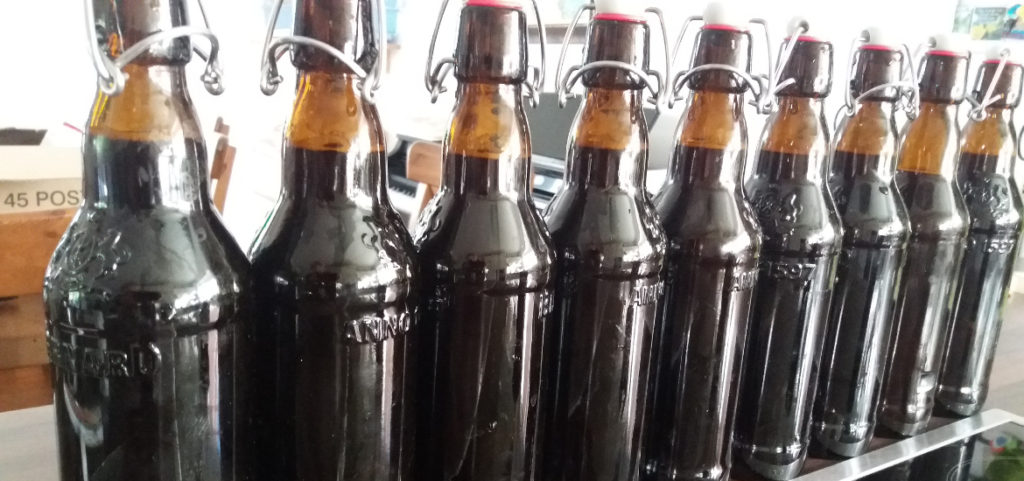
The same goes for beer. There is a whole range of taste that are described in certain beer types. But in reality, many of us (including me) simply fail to register all these tastes. Or we have to be specially reminded of them – “Can you taste this fine nutty taste?” So, many of us basically distinguish between good and bad beer. A beer that we like and a beer that we don’t like.
Even further, in my opinion for home brewers the variability from batch to batch is so great that finer notes from the yeast will simply go unnoticed. Or will be covered by something else. I am not saying that using a special flavor producing strain of yeast for homebrewing does not make sense. I am just saying that a lot of people won’t notice it and that the reproducibility of the taste is not guaranteed.
What about bakers yeast?
There are of course other characteristics that certain beer yeast types have, but the three main ones mentioned above are the important ones. At least for a homebrewer. You really do not care much how fast your fermentation is going since usually a day or two really does not make a difference. Further, how fast or how completely the yeast settles (attenuation) is also not critical. Even less important is the ideal temperature, since usually you do not control it (and are not able to do it) to the nearest degree to get the full amount of alcohol out of your wort. These are the type of things that are important for bigger producers to guarantee consistent quality and maximum yield, not for homebrewer.
So, the final question here is: can I use any kind of yeast? This is especially important since beside brewers yeast there is also another style of yeast sold, namely bakers yeast. It is cheaper, more readily available and in theory should work just as fine. There are a lot of examples and comparison on the internet and a general consensus seem so be that it works, but beer can have a more bready taste. Not too terrible in my opinion and definitely worth a shot, if you are out of brewers yeast.
Beer Yeast – Final thoughts
People will tell you yeast is important. But so is malt, water, hops, wort preparation, fermentation conditions, temperatures at various stages,… Basically everything you know about beer is important. And this is true and expected since life itself is complex. There is, however, some degree to which this parameters influence beer quality and many parameters are co-dependent. If you look closely to what really matters to you in your perfect beer, some things do not matter much.
As a home brewer you will not be making bottom fermenting beer. Why? Since it is quite tricky and requires additional equipment (to ensure fermentation at low temperatures). Again, usually you are not making high alcohol Belgian type beers. And to be frank, only a few people will notice subtle flavor changes in ale made with different yeast type. You batch to batch variability is much, much greater than the variability coming from different yeast types. So if you are an average homebrewer, yeast should not be a top priority on your list. Unless you are making something special…
To sum up. If you are a homebrewer and are not making high alcohol beer or lager beer, then the type of yeast you are using is not of the highest importance. There are other factors which require more attention like the type of malt and hopping. As long as you are using a decent type of yeast, you should expect good results, provided the other, more crucial factors are under control.
